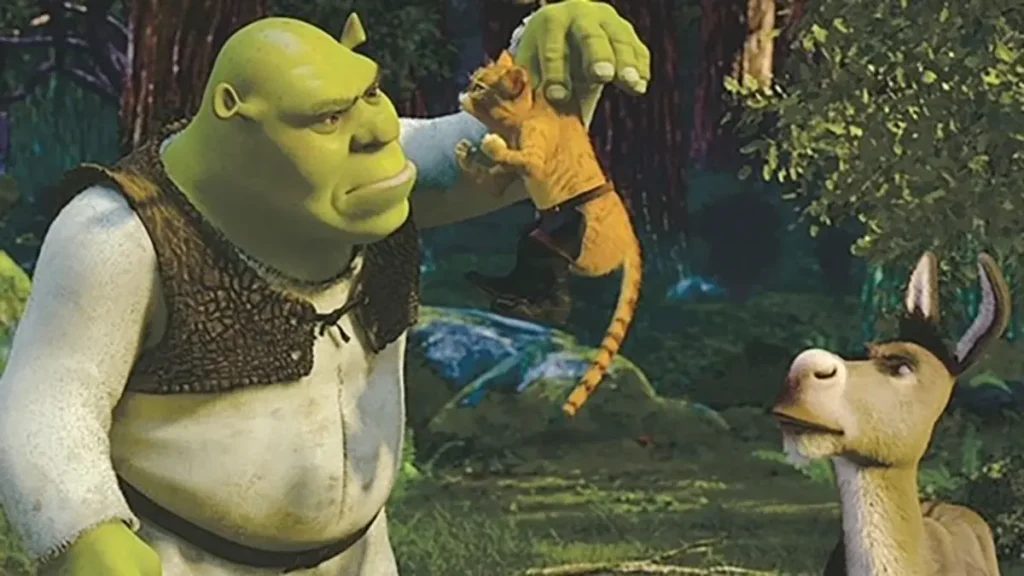This past week, I watched two movies on the same day: first a rewatch of Puss in Boots: The Last Wish (2022) before a trip to the cinema to see the newly-released Kung Fu Panda 4. With both films in mind, the contrast of quality left me staggered. Even upon this fifth rewatch, the former was a vibrant adventure with electrifying visuals that left me as entertained as the initial viewing. Kung Fu Panda 4, by contrast, left me disenchanted with a largely generic presentation, leaving me unenthusiastic to it watch again. Although a chance combination, the viewing of both films inspired further thoughts that have led to this article. I believe a factor in one film that was not only vastly more entertaining but also fresh and innovative is the animation on display.
Current Animation Trends:
Recently, animation has seen successes in the last year alone: Across the Spider-verse and Teenage Mutant Ninja Turtles: Mutant Mayhem were among the ten highest-grossing of last year. However, others, like Disney’s Wish and Pixar’s Elemental met disappointing box office returns and even worse critical reactions. Puss in Boots 2 and Kung Fu Panda 4 are similar and what the winners and losers have in common are their animation style. Puss in Boots, with Spider-Verse and Turtles, seems to have adopted this new trendy blend of coarse hand-drawn animation with elastic computer animation. The fourth outing with Jack Black’s heroic panda, among others, stuck with purely computer animation that has been around for decades now.
The question begs: are audiences moving past this once-innovative computer animation? This result is not limited to what this article will focus on, but it is an aspect I have pondered on for a while.
The Evolution of Computer-Generated Animation:
To provide context, I shall divulge a major factor of computer-generated animation (CGA). One trend in computer animation has been the effort to create human characters that look and move with the highest degree of realism. Realism in CGA can mean making each frame look photorealistic, in the sense that the scene is rendered to resemble a photograph or make the characters’ animation believable and lifelike. In movies like Toy Story, characters like Woody and Buzz emulate the plastic materials of the collectables they are based on. Others include the fur of Puss in Boots as he has been seen in the Shrek franchise and the first of his solo outings, which not only emulates a genuine feline but almost every individual hair is visible.
True, the rule of animation is never to copiously replicate the aesthetic of the real world, lest we risk the uncanny valley, the concept where the human audience tends to have an increasingly negative response to a human replica look and acts more and more human. Films that have attempted photorealistic human characters, such as The Polar Express, Beowulf, and A Christmas Carol have been criticized as ‘disconcerting’ and ‘creepy’.
The point is, however, that there is a sense of realism toward this art form. In the attempts to modernise the industry, animation began to remove the rough edges of traditional 2-D animation.

Embracing Imperfection:
Another element to note is the smoothness of CGA. Whereas beforehand, with traditional 2D animation, one could see the hand of the animator in the outline around the characters or details of their features. Therefore, this left a sense of apparent imperfection to the craft on display. CGA appears more perfect in design. Characters like Po in Kung Fu Panda are brought to life through digital modelling that has smooth edges generated by the latest technology.
That being said, I argue that this perfectionism is what may have incurred a mild decline in recent years. The joy of hand-drawn art is that you can see the hand of the artist.
Then, much like any historical art movement, came a new breed of animation. This was arguably popularised by the acclaimed Into the Spider-Verse (2018). An article from Vulture reflected on the film’s impact through “achieving a distinctive look with a basis in the old school required some technological advances from the new school,” something that was a fresh visual treat for the eyes. They interviewed the film’s VFX supervisor, Danny Dimian, who described how he and his team created an entirely new breed of mainstream animation.
Dimian explains “[We] wanted to break the mould – ‘break the machine,’ we would say. There were a few things, as a VFX supervisor, I was trying to ensure. First and foremost was to support the story. We want to be out there, but not so crazy or disjointed that it takes away from the story.”
“Early on, we were looking at what we liked about comic-book illustration,” Dimian continues. “There was something we liked about the specific styles in the artwork that we wanted to make part of this movie. It brings a sense of wonder and gives you a feel for the hand of the artist and its imperfections.”
The Future of Animation:
At a time when the entertainment industry has grown obsessed with photo-realism, Dimian, along with the film’s duo directors, Lord and Miller, dared to invest in the unrealistic.
Further films followed suit. The Last Wish’s design was inspired by Spider-Verse to make the film look more like storybook illustrations as opposed to the more realistic design we had seen of the cavalier feline before.
Judging by audience reactions to this new phenomenon, it is perhaps a sign that we are stepping forward into a new era of animation.
At the same time, this does not implicate an inevitable downfall of the once-dominant CGA. Pixar’s Elemental, about a city inhabited by anthropomorphic elements of nature, was slow to ignite box office revenue but managed to eventually find its sturdy current. That too incorporated the usual photo-realistic animation of characters made out of water elements. Simultaneously, they made the fire elements look stylishly hand-drawn around the outer layers. So, there may still be a future for CGA, yet not as frequent as it has been before.
I am not saying that this would have entirely fixed Kung Fu Panda 4’s mediocrity, but a new visual style may have elevated me from that void of apathy I felt while watching it. Both it and Puss in Boots: The Last Wish had a significant gap between their releases and the last time we saw them. The difference was that the latter came swinging in with a new style that upheld the promise that the Shrek franchise, after years of cinematic inactivity, was back with new life, instead of the prospect of seeing the old familiars again.











